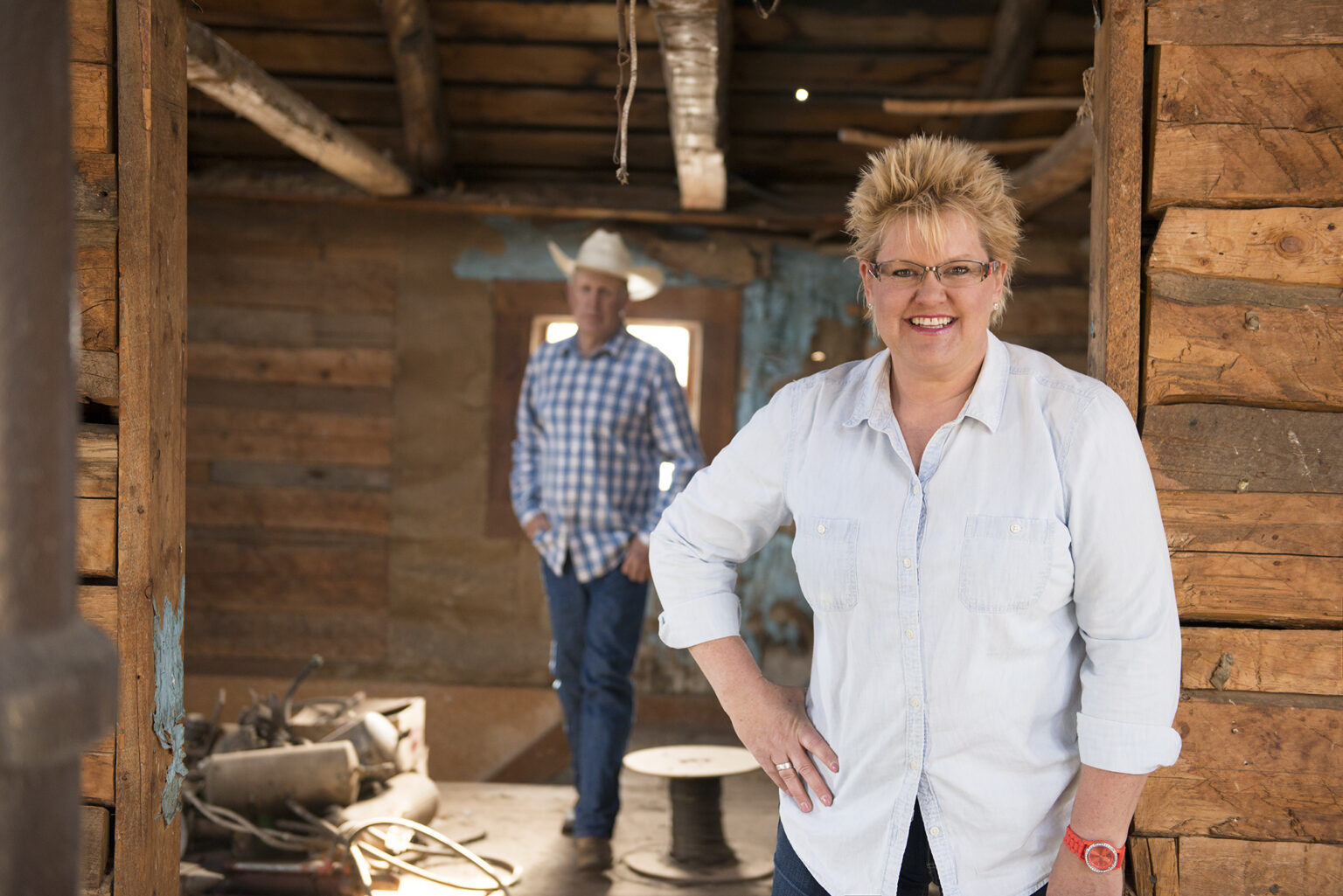Originally published on October 4, 2019 2:03 pm
Farmers had been growing lettuce in the San Luis Valley for decades, but it wasn’t until the 1950s that the crop started to take off, thanks to advances in farming and vacuumed sealed shipping containers. At the time, locals referred to lettuce as “green gold,” and thousands of heads were shipped to East Coast cities each day.
Today the valley may best known as the home to the Great Sand Dunes, but the rich soil, high altitude and snowmelt from nearby blanca peaks create the perfect conditions for growing food. Besides lettuce, potatoes, carrots and quinoa are also staple crops here, which is why agriculture is still the largest economic engine and the second largest employer in the region.
In mid-September, Carlos Alaniz walks across a field of lettuce in his heavy leather boots and a sun-bleached flannel. In a single swift motion, he demonstrates how to harvest heads of lettuce from the field with a long knife.
“You cut it at its base,” he said. “And tear off any of the ugly leaves.”
Alaniz has worked in these fields since the 1970s, back when famed labor activist Cesar Chavez led fieldworkers here in the great lettuce strike.
Like the rest of Southern Colorado, the San Luis Valley was a part of Mexico until 1850. When the U.S. border was redrawn, Mexican ranchers settled the area. Then as agriculture boomed, it was predominantly Mexican migrant farmworkers who came to harvest the crops. Today about half of all residents here identify as Latino; many still come here for work in the fields.
A worker shortage
A crew of 18 lechugueros, or lettuce harvesters, moves at a breakneck speed, cutting heads of lettuce with machetes and tossing them in plastic bags. They follow a field pack machine, a tractor slowly pulling a platform where more workers stand assembling cardboard boxes and filling them with heads of lettuce. On a good day, said Alaniz, they’ll harvest and pack 11,520 heads of lettuce every two hours.
As he steps over rows, Alaniz points to several field pack machines in the distance that stand idle. “They’re aren’t enough people,” he said.
The shortage of workers means they’ve already had to leave some lettuce to rot in the field.
In the San Luis Valley, and nationwide, the number of farmworkers is shrinking, in large part due to cumbersome and outdated immigration policy. Alaniz says they’ve also lost workers to a new crop.
“A lot of people here have gone to work in marijuana,” he said.
The new “green gold” pays $15 an hour, better than picking lettuce. On average, farmworkers in the U.S. earn about $12.50 an hour, which might explain why the San Luis Valley is also among the poorest regions in the state. About one third of children in the region live in poverty.
Year-Round Work
The wages may be small, but there’s always plenty of work here. Once the lettuce season is over, many workers get jobs at the potato sheds where the season runs through winter. The ability to find year-round agricultural work is why many migrant farmworkers choose to live in the valley permanently.
Growing up in Mexico, Alyssa Tovar’s mother supported her and her two siblings by working in the fields. For several months at a time, she would travel on a work visa to Arizona and New Mexico to pick lettuce. Meanwhile the kids stayed behind with an aunt and would talk to their mother over the phone.
“She (would) say to me, I know it’s hard, it’s also hard for me. Just please be strong because if you stay strong I will stay strong,” recalls Tovar.
Then six years ago, Tovar’s family had the opportunity to immigrate to the U.S. and chose the San Luis Valley, where Tovar’s mother could find year-round agricultural work.
At 22, Tovar wears birkenstock sandals, her long black hair in a loose ponytail. A senior and a clinical psychology major at Adams State University in Alamosa, Colorado, she’s never had to work in the fields out of necessity, but rather to learn a lesson. Her mother often recited the common Spanish saying, “a pencil weighs less than a shovel.”
“She (didn’t) want us to pass for the same things that she did,” said Tovar.
At her mother’s insistence, Tovar spent about a month working in the lettuce fields. She said for six days a week, the work started at 5 a.m. and stretched on for 12 hours with few breaks. In the mornings, they worked in the dark when the field was still covered in frost. Tovar remembers how she’d lose the feeling in her fingers.
“You’re like okay, I don’t care, I’m just going to try and do what I (can) because at some points you cannot move your fingers anymore,” she said.
Education for the next generation
After high school, Tovar enrolled at Adams State University, one of three colleges in Colorado to offer the College Assistance Migrant Program — or CAMP. Created in 1972, CAMP is a little-known federal program with chapters across the country meant specifically for the children of seasonal migrant farmworkers.
Jasmine Camponeschi, who helps run the program at Adams State, says what stands out most about these students is their work ethic.
“A lot of them actually work in the fields alongside their parents in the summers, that’s what they’re doing,” she said.
A support program to help students navigate the first year of college, CAMP offers scholarships for tuition and stipends that they can use for rent or food. The program even brings students to see theater productions or to the Great Sand Dunes, something few have had the opportunity to experience.
“Whatever it is that the student is needing, we try to figure out how to find them the right resources and support them so that they can be successful,” Camponeschi said.
Many are the first in their families to graduate from high school, yet as the students navigate college they often feel pressure to help out financially or care for younger siblings. If their parent has to see a doctor, they might be asked to skip class so that they can translate for them.
“They have a lot more responsibilities than a typical student does,” said Camponeschi.
But it’s the experience of working in the fields that’s also a source of constant motivation. Last summer, Camponeschi recalls one CAMP student who dropped out of college and went to work in the potato sheds alongside her mom.
“And she said ‘I was working 12 hour days, six days a week, and I realized, I don’t want to do this forever like my mom has’,” Camponeschi said.
The student has now re-enrolled.
Many CAMP graduates end up staying in the valley. They work at the local hospital and schools and appreciate, perhaps more than most, the privileges an education affords them. Tovar, for example, isn’t sure where her career will take her but the type of lifestyle she wants is crystal clear.
“I want to work eight hours per day, probably five days a week. I want to have time to go to the park with my kids,” she said.
Ultimately, Tovar and her siblings want to make sure their mom, who’s 61, can retire and live on a small farm. She wants to have chickens and cows to remind her of the farm she grew up on. But there won’t be any lettuce.
Tovar says she’ll never be ashamed of her agricultural roots. She knows that in many ways, she wouldn’t be here if it weren’t for them.
Editors note: this story has been updated with the correct spelling of Tovar.
Copyright 2019 KUNC. To see more, visit KUNC.









